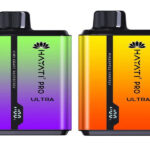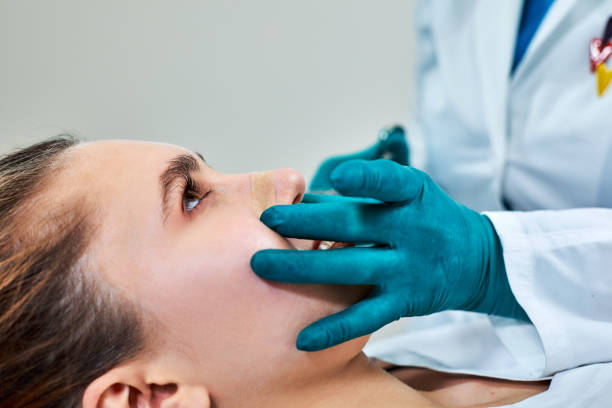Introduction: The Rise of Visual Precision in Aesthetic Medicine
Rhinoplasty has long been both a medical procedure and an artistic endeavor—shaped not only by technical skill but also by the surgeon’s ability to interpret and align with the patient’s aesthetic goals. In Riyadh, a city quickly emerging as a center of excellence in advanced cosmetic surgery, a new technology is redefining how patients envision and approach nose reshaping. Virtual Reality (VR) is making waves in leading clinics, enabling patients to preview their potential results before surgery with stunning realism. This innovation is not only improving patient satisfaction but also transforming the way surgeons plan and execute procedures. Riyadh’s integration of VR into rhinoplasty consultations marks a bold leap forward in personalized, precise, and emotionally intelligent aesthetic care.
The Technology Behind the Mirror: How VR Works in Rhinoplasty
Virtual Reality in rhinoplasty combines advanced 3D imaging, facial scanning, and simulation software to produce a dynamic, immersive visual experience. In Riyadh’s top clinics, patients are first scanned using high-resolution 3D cameras that capture every detail of their facial structure. These scans are then uploaded into a VR system that allows both the surgeon and patient to manipulate and preview different nose shapes in real-time. Wearing VR headsets, patients can observe their post-surgical nose from various angles and lighting conditions, helping them make more informed decisions. This level of engagement is revolutionary—it empowers patients to take part in the design process with clarity and confidence.
Enhancing Surgeon-Patient Communication
One of the greatest benefits of VR technology in Riyadh’s rhinoplasty clinics is its ability to enhance communication between surgeons and patients. Traditionally, patients relied on verbal descriptions or two-dimensional photo edits to understand potential outcomes, which often led to misunderstandings or unmet expectations. With VR, the conversation shifts from abstract to concrete. Surgeons can now visually demonstrate how subtle changes in tip projection, nostril shape, or nasal bridge height will affect the overall harmony of the face. This alignment of vision builds trust and minimizes the risk of post-operative disappointment. As a result, Rhinoplasty in Riyadh is becoming not only more precise but also more patient-centric. Riyadh surgeons have found that patients who undergo VR consultations are more satisfied, confident, and emotionally prepared for their procedures.
The Psychological Impact of Visualization
For many patients, especially those seeking rhinoplasty for deeply personal or emotional reasons, the psychological aspect of the journey is just as important as the physical transformation. Virtual Reality offers a unique therapeutic benefit by reducing anxiety and setting realistic expectations. In Riyadh’s aesthetic community, this has proven particularly valuable for first-time surgery candidates or individuals considering revision rhinoplasty. By visualizing potential outcomes in advance, patients experience a sense of control and reassurance, which significantly enhances their overall satisfaction. Clinics have noted that VR-assisted patients show fewer signs of decision regret and display greater post-surgery confidence, often correlating with improved social and professional interactions.
Cultural Sensitivity and Customization in Saudi Arabia
Cultural preferences play a crucial role in shaping rhinoplasty outcomes, especially in Riyadh, where notions of beauty are deeply connected to traditional aesthetics and gender-specific ideals. For example, Saudi women may seek a more refined but conservative enhancement, while men might favor stronger, more angular nasal profiles. Virtual Reality enables surgeons to tailor simulations according to these nuanced preferences. Riyadh’s VR platforms often include pre-set templates based on local facial anatomy and beauty standards, allowing for personalized and culturally sensitive previews. This feature not only improves accuracy but respects the diverse aesthetic goals of Riyadh’s multicultural patient base.
Training the Next Generation of Rhinoplasty Surgeons
The integration of VR is not limited to patient consultations—it is also revolutionizing surgical training in Riyadh. Medical institutions and cosmetic academies are now incorporating virtual simulations into their curriculum, giving residents and fellows the ability to practice surgical scenarios in a risk-free environment. These virtual surgeries mimic real-time procedures, complete with anatomical resistance and tissue response, enhancing technical proficiency before a surgeon ever enters the operating room. This investment in immersive training ensures that Riyadh remains at the forefront of global rhinoplasty excellence and helps foster a new generation of surgeons who are both technologically adept and artistically skilled.
Combining VR with AI for Predictive Precision
While VR provides visualization, it becomes even more powerful when combined with Artificial Intelligence. Riyadh clinics are beginning to use AI algorithms alongside VR systems to predict healing trajectories and long-term outcomes. For example, AI can simulate how swelling will resolve over weeks or how cartilage will settle into place, giving patients a timeline of expected changes. This predictive capability allows for even more informed decision-making and helps surgeons refine their techniques based on highly individualized data. As AI and VR continue to converge, Riyadh’s aesthetic medicine community is poised to lead in offering precision-based, patient-specific surgical planning.
Supporting Revision Rhinoplasty Cases
Patients seeking revision rhinoplasty often come with complex surgical histories and heightened emotional expectations. VR proves especially valuable in these cases by helping both the patient and surgeon understand the existing anatomy and visualize realistic enhancements. Riyadh’s elite surgeons are using VR not only to simulate potential outcomes but also to explain what is surgically feasible, thus preventing overpromising. This transparency improves patient trust and aligns expectations with achievable results. In a city that sees an increasing number of regional and international clients seeking corrective procedures, VR is becoming a vital part of the consultation toolkit.
VR in the Pre-Operative Workflow
The use of Virtual Reality is becoming a seamless part of the pre-operative process in Riyadh clinics. From the initial consultation through to surgical mapping, VR plays a central role. Once the patient’s goals are identified, surgeons use the VR data to design the surgical blueprint. Some platforms allow for surgical guides to be 3D printed based on the VR scan, further enhancing precision. This meticulous pre-planning reduces operative time, lowers complication rates, and improves final outcomes. Riyadh’s clinics are embracing this holistic, tech-forward approach, ensuring that the surgery day is as efficient and predictable as possible.
A Boost to Medical Tourism in Riyadh
Riyadh’s integration of VR in rhinoplasty is also a strong driver of medical tourism. International clients are drawn to the city not only for its surgical excellence but also for its cutting-edge, patient-centric technologies. The ability to undergo a VR consultation remotely and preview potential results before even arriving in the country offers convenience and reassurance to patients traveling from abroad. Riyadh’s reputation as a technologically sophisticated and culturally respectful hub for cosmetic surgery is being amplified by the growing use of VR, placing it firmly on the global map for facial aesthetic innovation.
The Future of VR in Facial Aesthetics
As VR technology evolves, Riyadh clinics are exploring even more interactive and realistic experiences. Future systems may include haptic feedback, allowing patients to “feel” the simulated results, or advanced facial emotion tracking to show how the new nose responds during smiling, speaking, or other expressions. There is also potential for virtual follow-ups, where patients can monitor healing progress using VR overlays on their actual post-op scans. These advancements will not only improve patient engagement but also set new standards for post-operative care and long-term satisfaction.
Conclusion: Merging Innovation with Empathy
Virtual Reality in rhinoplasty represents more than just a technological upgrade—it reflects a deeper shift in how aesthetic medicine is practiced in Riyadh. By combining innovation with empathy, VR allows patients to become collaborators in their own transformation. Riyadh’s leading clinics have adopted this approach not just to enhance outcomes, but to redefine the entire patient experience—from first consultation to final reveal. In a field where precision, communication, and trust are paramount, VR has emerged as a powerful tool that bridges the gap between desire and reality. As more clinics adopt and refine this technology, Riyadh continues to set the global standard for intelligent, immersive, and deeply personalized facial surgery.
- How Riyadh Clinics Let Patients Preview Their New Nose
- As a result, Rhinoplasty in Riyadh is becoming not only more precise but also more patient-centric.
- Health, Fitness, Fashion, Beauty,
Related posts:
 Online Kundali: Generate Free & Accurate Kundali just in Minutes
Online Kundali: Generate Free & Accurate Kundali just in Minutes
 Office Janitorial Services Woodfin, NC: By Clean Environments of Asheville, Inc.
Office Janitorial Services Woodfin, NC: By Clean Environments of Asheville, Inc.
 Syna World: Exploring the Immersive Universe Created by Central Cee
Syna World: Exploring the Immersive Universe Created by Central Cee
 Pet Door Installers & Pet Doors in Melbourne: The Ultimate Guide for Pet Owners in 2025
Pet Door Installers & Pet Doors in Melbourne: The Ultimate Guide for Pet Owners in 2025
 Tree Removal the Right Way: What to Expect from a Professional Tree Service
Tree Removal the Right Way: What to Expect from a Professional Tree Service
 A Step by Step Guide to Chandelier Cleaning in Dubai Best Services
A Step by Step Guide to Chandelier Cleaning in Dubai Best Services
 The Timeless Appeal of Pleated Dress: A Must-Have in Every Woman’s Wardrobe
The Timeless Appeal of Pleated Dress: A Must-Have in Every Woman’s Wardrobe
 Hayati Pro Ultra 15000 Puffs Experience up to 15,000 puffs per device with the Hayati Pro Ultra Disposable Vape.
Hayati Pro Ultra 15000 Puffs Experience up to 15,000 puffs per device with the Hayati Pro Ultra Disposable Vape.







